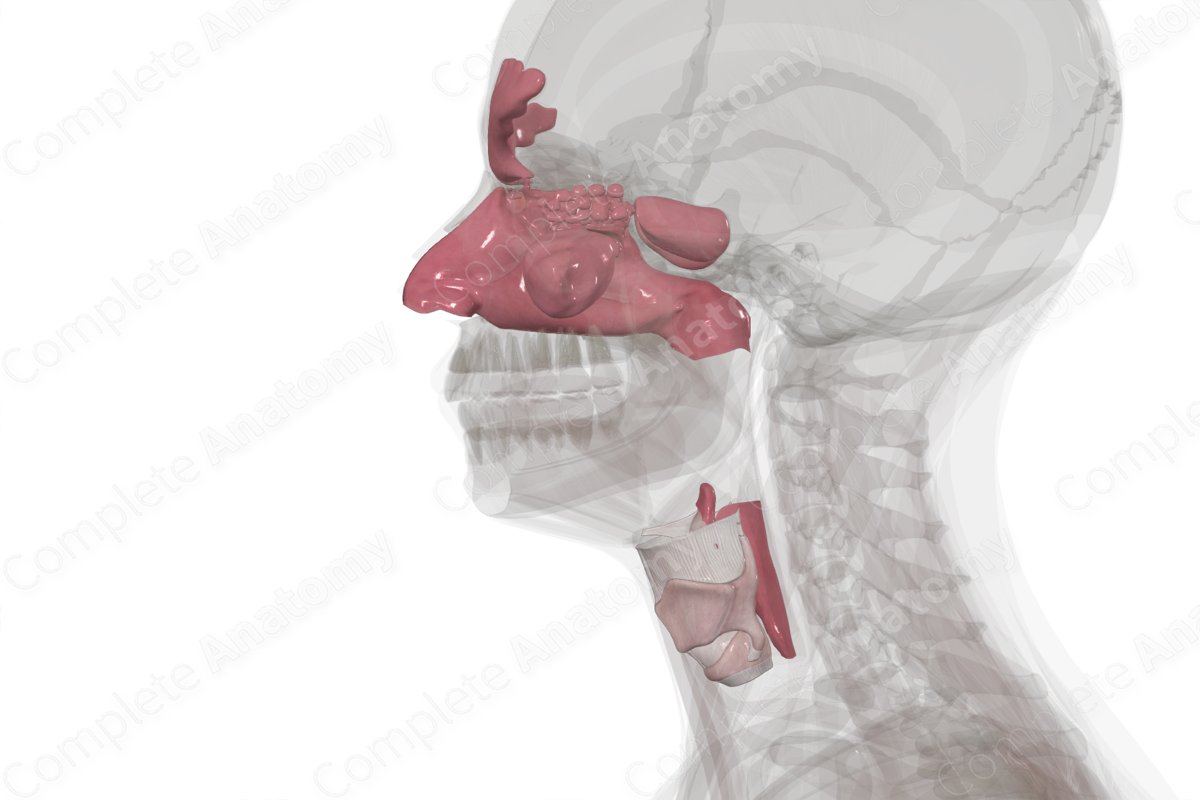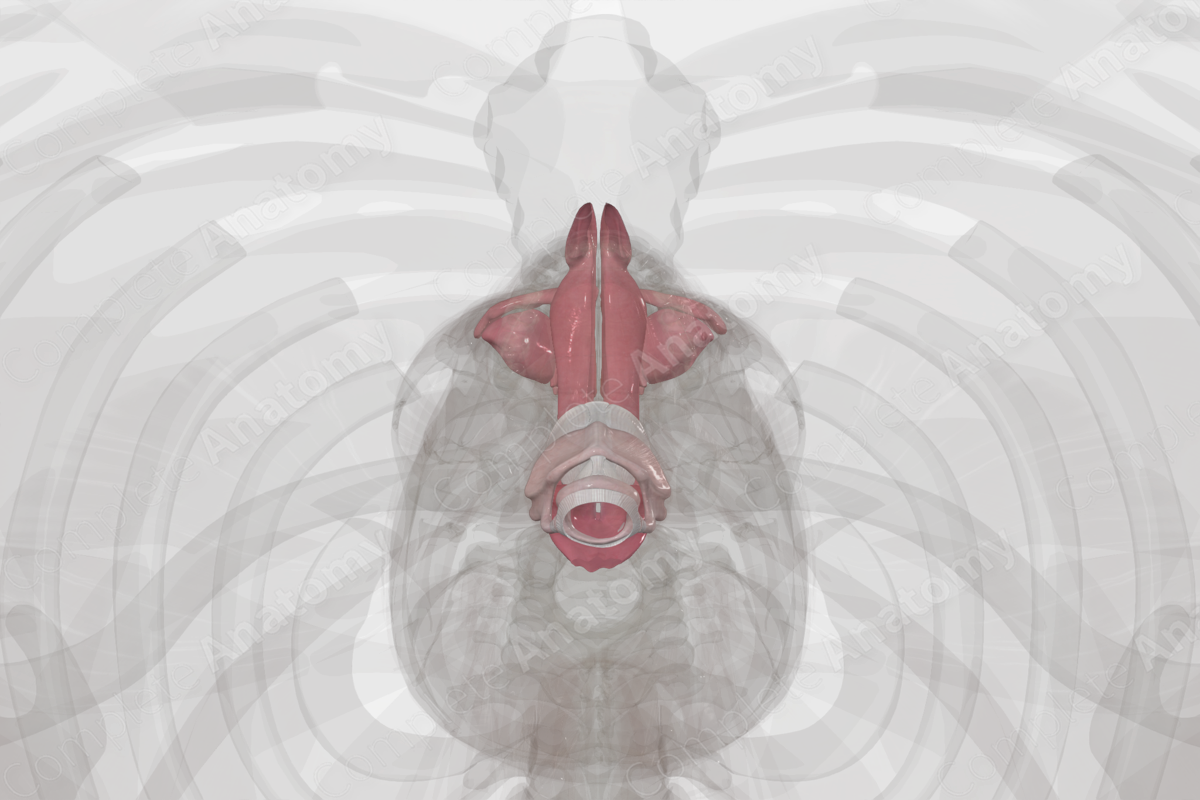
Description
The upper respiratory system (or upper respiratory tract) consists of the nasal cavity, paranasal sinuses, pharynx, and larynx. In addition to respiration, the upper respiratory system is also involved in phonation (i.e., the production of vocal sounds), mainly via the movement of air across the vocal cords.
The nasal cavity is the passage from the external surface of the face to the nasopharynx. It has four walls composed mostly of bone and some cartilage. All walls are covered with pseudostratified columnar epithelium (respiratory epithelium), except for a small, superior patch of olfactory epithelium containing olfactory receptors. The nasal cavity is responsible in part for warming and moistening the air on its way to the lungs. Four groups of air-filled spaces called paranasal sinuses (maxillary, frontal, ethmoidal, and sphenoidal) surround the nasal cavity. They are involved in humidifying and warming air on its way to the lungs, amplifying vocal resonance during phonation, regulating intracranial pressure, and decreasing the overall weight of the skull.
The pharynx is a part of both the digestive and respiratory systems. It comprises part of the conduction zone of the respiratory tract and is made up of a musculomembranous tube that joins the esophagus and larynx with the oral and nasal cavities. Separating the respiratory tract from the esophagus is the cartilaginous epiglottis, which projects obliquely upward and covers the glottis during swallowing to prevent food from entering the airways.
The most inferior part of the upper respiratory tract is the larynx, which is continuous inferiorly with the trachea. The mucosa that lines the bronchi, trachea, and larynx contain small hair-like projections called cilia that shunt unwanted debris and mucous from the respiratory tract towards the larynx and pharynx, where they can be removed by swallowing.




